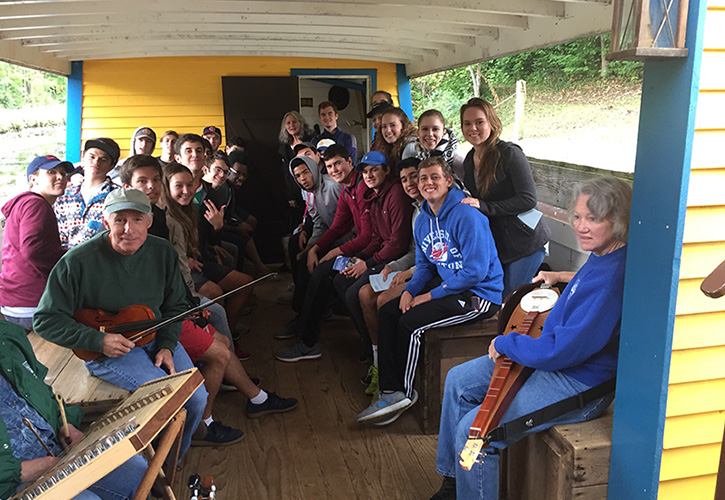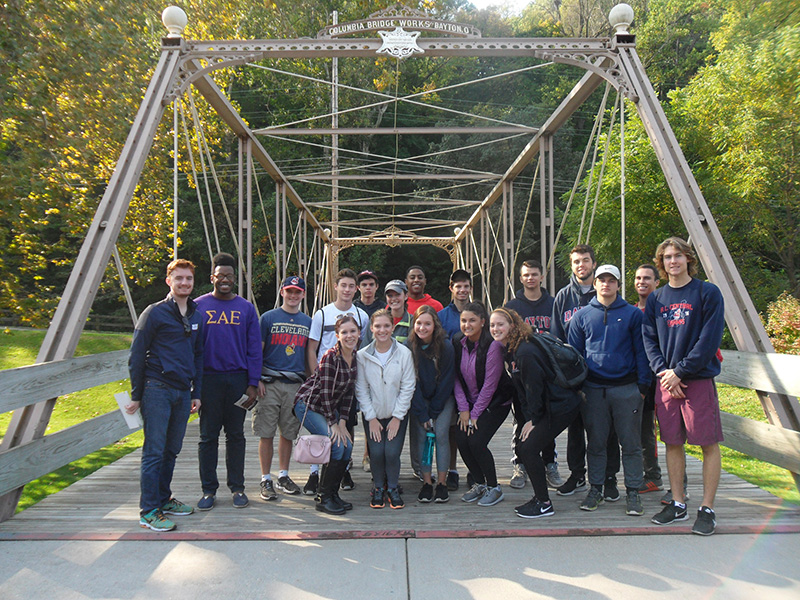Integrated Learning-Living Communities

BEES: Business Ethics and Environmental Sustainability
By Barbara John, BEES Coordinator
The newly launched integrated living learning community B.E.E.S. - Business Ethics and Environmental Sustainability - had a busy fall.
Our first trip was to the Johnston Farm and Indian Agency in Piqua, Ohio. Located on the banks of a segment of the Ohio Erie Canal, this farm was strategically located, able to export crops to markets south and east. But it was also the final collection point for the region’s Native Americans (who were relocated west by government officials). The visit featured a presentation on the history of trade in the region (both between Native American tribes and later with settlers of European descent). Ohio historian Andy Hite explained how occasional trade morphed into full integration with markets in the east, incentivizing settlers to deforest the Miami Valley (both for the timber and to clear the land for farming), to harness the streams to mill flour (for export) and later to extract limestone—Dayton Marble-- to build a substantial city at the nexus of the five rivers (where bison and mosquitos originally outnumbered humans). The highlight was a tow-trip in a restoration of one of the original canal boats that supplemented river transport in southwestern Ohio until the railroads undermined their profitability.
Our second excursion—this time by bike—was to Carillon Historical Park and Sunwatch Village. At Sunwatch, a reconstruction of a 9th century Indian settlement, students observed flint knapping and got to try their talents at throwing spears using atlatls (thought to be a precursor to the bow and arrow). They also learned that ecological damage (to the forests and watershed of the Miami Valley) did not begin with the arrival of settlers of European descent.
At Carillon, the guided tour included a view of the (relocated) first log building erected in Dayton—Newcom Tavern—as well as an exhibit devoted to the flooding that plagued early residents. After viewing an extensive collection of cash registers—invented in Dayton—students learned about John Patterson, a descendant of Robert Patterson (a slave-owner from Kentucky who built one of the first flour mills at his homestead on Stonemill Road, just a stone’s throw from the UD campus). Robert Patterson went on to head of National Cash Register (NCR) during the Dayton Flood of 1913; his organizational prowess during rescue operations saved many lives.
The group also received a briefing from Kurt Hatcher, in charge of improving the sustainability of UD’s physical plant, on UD’s progress toward achieving LEED certification and Ohio’s energy mix. This presentation enabled the smaller group that took advantage of a joint field trip to the Cincinnati Zoo with the SEE ILLC to appreciate the Zoo’s success at becoming energy self-sufficient using solar panels in the parking lot. An entrepreneurial group went to a lecture to learn about the challenge of beekeeping. Another group of BEES students took a kayak training session with the Outdoor Education program, in preparation for an anticipated trip on the river in the spring to learn about the region’s river shed.


